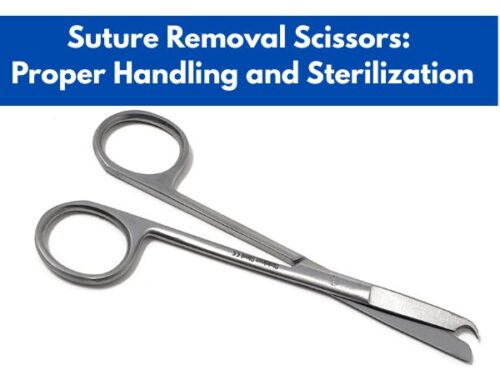Choosing the Right Foley Catheter: A Comprehensive Guide for Healthcare Professionals

While going through a medical condition that restricts or completely hinders the flow of urine, it becomes difficult for the patients to empty their bladder naturally. In these cases, the physicians recommend the use of a catheter which aids this process of urinary excretion. Catheters are tube-like devices that are inserted into the urinary bladder via the urethra. A balloon holds the catheter into the bladder and prevents its falling. The external end of the catheter is attached to a bag that collects urine. Among multiple choices, a Foley catheter is often selected for these patients. It is a type of indwelling catheter that was first introduced by Frederic Foley in the 1930s. Let us understand what exactly a Foley catheter is and what features it possesses.

Statistics Regarding Catheter Use in the US
According to the statistics given by the International Society for Infectious Diseases, on an annual basis, approximately 30 million indwelling catheters are sold in the US. This number is justified considering the fact that almost 20% of the patients who go through a hospital stay are employed with a catheter at some point. Keeping in mind their vast use, a physician must know how to select the right type of catheter.
Uses and Advantages of a Foley Catheter
Although the main purpose of using a Foley catheter is to empty the urinary bladder, these are also employed for the following reasons:
– A Foley catheter is used temporarily to empty the bladder during surgery.
– These can also be used to deliver medications into the urinary bladder.
– A Foley catheter also comes in handy when it comes to controlling bleeding due to an injury or during a surgical procedure.
The conditions in which a Foley catheter is preferred include:
– Urinary retention
– Enlargement of the prostate gland
– Urinary incontinence
– Prostate or genital surgery
– Scarring
– Being under the influence of an epidural
Choosing the Right Foley Catheter
Usually, all the Foley catheters are soft and thin. These are available in multiple sizes so that selection can be made based on the patient’s specific needs or age. Here is a guide for selecting the most suited Foley catheter:
● Size Range
The size of a Foley catheter is measured in the French (Fr) scale. For this purpose, its outside diameter is taken into account. As one Fr is equal to 0.33 mm, the Foley catheters can be classified as follows:
| French (Fr) unit for Foley catheters | Diameter (mm) | Colors |
| 6 | 2.0 | Yellow-green |
| 8 | 2.7 | Cornflower blue |
| 10 | 3.3 | Black |
| 12 | 4.0 | White |
| 14 | 4.7 | Green |
| 16 | 5.3 | Orange |
| 18 | 6.0 | Red |
| 20 | 6.7 | Yellow |
| 22 | 7.3 | Purple |
| 24 | 8.0 | Blue |
| 26 | 8.7 | Black |
Size 12 Foley catheters is often employed for the management of urinary obstruction in adult patients while those between number 6 to 10 are particularly used for pediatric patients. A physician should choose the appropriate size based on the patient’s needs as well as age.
● Length
The length of a catheter varies based on its use in a male or a female patient. In the case of a Foley catheter, a length of 30 to 40 cm is suitable for male patients while a catheter between the ranges of 7 to 20 cm should be preferred for female patients.
● Number of Lumens
Foley catheters have a two-lumen as well as a three-lumen option. One lumen is always dedicated to urine collection or drainage. The second one is responsible for holding sterile water needed to inflate the balloon while a third lumen is used for irrigating the bladder.
● Construction Material
As catheters are usually constructed using silicones, rubber, or plastic, one must choose the material type based on the patient’s need. Some patients might be allergic to one of these materials or have issues with latex which is often coated on the catheters. Moreover, the material of the catheter should be soft enough not to cause any damage during insertion and withdrawal.
● Hydrophilic Coating
A catheter coated with a hydrophilic material becomes slippery and is easy to insert and withdraw. This way, the chances of bleeding in the urethra are minimized.
Foley Catheter-Brands, Features, and Specifications
Some of the best-known Foley catheters available in the US market include the following brands:
● Covidien Foley Catheters
Foley catheters by Covidien are prepared using 100% silicone and have a balloon size of 5 ml. It is a two-lumen indwelling catheter and has a diameter of 4.7 mm (14 Fr). These Foley catheters are suitable for use during and after surgery.
● Medline Foley Catheters
Medline manufactures a wide variety of Foley catheters. These catheters are made up of silicone and are usually latex-free. However, some of these Foley catheters have a latex coating over their silicone-elastomer body. The balloon size is 30 cc and that of the catheter is 18 French. These are available in double-lumen form.
● Dynarex Foley Catheters
Dynarex Foley catheters have a size of 22 Fr with a balloon size of 30 cc. These are medical-grade catheters with a latex rubber coating over their silicone body. These are soft and flexible in nature. These have two lumens and are suitable for long-term care.

The Foley catheters mentioned in this article, along with many other medical supplies, can be purchased from Health Supply 770, a reliable name when it comes to medical products. They have a 30-day money-back guarantee and provide your products to you in the shortest possible time. Click the link at the end of the article to check the wide range of catheters on the website.
Conclusion
Issues such as urinary obstruction or lack of bladder control result in the hindered flow of urine from the body. To manage this obstruction, a Foley catheter is often employed which is entered into the bladder via the urethra. Once inside, a Foley catheter makes sure that bladder emptying is continuous and complete.
Considering their importance, healthcare facilities should have Foley catheters in bulk. Purchasing medical devices from reliable vendors like Health Supply 770 ensures the provision of quality products along with satisfactory services.
References:


















